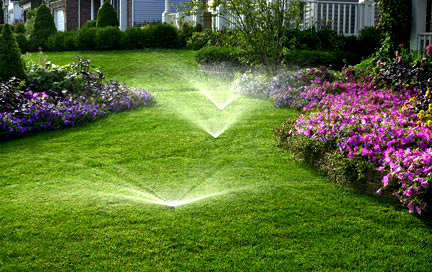
Keeping your plants healthy can feel like a full-time job, especially when watering schedules get unpredictable. Some days, there’s too much water; other days, it’s not enough. What if you could set up a system that takes care of watering for you—giving plants exactly what they need without wasting time or water?
An auto watering system makes that possible. Instead of dragging out the hose or worrying about whether your garden is getting enough moisture, this setup automates the entire process. With the right components, it delivers water efficiently, keeping plants hydrated while cutting down on water waste.
So, how do you build one? It’s easier than you think. With a little planning and the right equipment, you can create a system that works for your yard, big or small.
How an Auto Watering System Can Save You Time, Water, and Effort
Watering plants by hand can be frustrating. Some days, it’s too much, other days, not enough. Missing even a couple of days can leave plants struggling. That’s why an auto watering system is a game-changer. It automates irrigation, making sure plants get the right amount of water without waste or effort.
This system runs on a timer, connected to tubes that deliver water directly to the roots. Some versions even adjust based on weather, preventing overwatering on rainy days. Once set up, it takes care of everything, so you don’t have to.
The advantages are huge. Water bills go down, plants stay healthier, and there’s no stress about missing a watering day. It’s a simple way to keep gardens, lawns, and flower beds thriving. Instead of spending time dragging hoses around, you get a system that works for you—automatically, efficiently, and with zero hassle.
Key Components of an Auto Watering System
A well-designed auto watering system needs a few key parts to work smoothly. Each piece plays an important role in making sure your plants get the right amount of water without waste or effort. That’s why PRO Sprinkler Systems, Inc. focuses on providing high-quality irrigation solutions built to last.
- Water Source – Every system starts with a water supply. This can be your home’s main water line or a rainwater collection system. The goal is to have a reliable source that keeps the system running consistently.
- Pipes and Tubing – Water needs a way to reach your plants, and that’s where pipes and tubing come in. They direct water to different areas, making sure everything gets covered without oversaturating certain spots.
- Valves and Filters – Valves control when and where water flows, while filters keep debris from clogging the system. Without these, you’d either have water flowing when it shouldn’t or a blocked system that stops working.
- Drippers, Sprinklers, or Soaker Hoses – This is how water actually reaches your plants. Drippers slowly release water near the roots, sprinklers spread it over a wide area, and soaker hoses gently soak the ground to prevent evaporation. PRO Sprinkler Systems, Inc. offers various options based on your property’s needs.
- Timer or Smart Controller – The brain of the system. A timer turns the water on and off at set times, while smart controllers adjust watering based on the weather so your plants don’t get too much or too little.
- Pressure Regulators and Sensors – To keep water flow steady, pressure regulators make sure it’s not coming out too fast or too slow. Sensors can take it a step further, checking soil moisture and making automatic adjustments.
Step-by-Step Guide to Building an Auto Watering System
Setting up an auto watering system doesn’t have to be complicated. With a little planning and the right components, you can create a system that keeps your plants watered without the daily effort. Follow these simple steps to get everything in place.
Step 1: Assess Your Irrigation Needs
Not all plants need the same amount of water. Some thrive with frequent watering, while others do better with occasional deep soaking. Before installing an auto watering system, take a moment to identify what you’re working with.
- What types of plants do you have? Lawns, flowers, vegetables, and shrubs all have different water needs.
- How does water drain in your yard? Some areas might dry out faster, while others stay wet longer.
- What is the local climate like? Hot, dry regions may require more frequent watering, while cooler, rainy areas need less.
Step 2: Choose the Right Irrigation Method
Different watering methods work best for different types of spaces. Choosing the right one makes a big difference in efficiency.
- Drip Irrigation – Ideal for plants that need slow, steady watering. It delivers water directly to the roots, reducing evaporation and waste.
- Sprinkler Systems – A good choice for large areas like lawns. They spread water evenly but can lose some moisture to wind and evaporation.
- Soaker Hoses – Great for flower beds and vegetable gardens. These hoses release water along their length, soaking the soil gradually.
Step 3: Plan the System Layout
Now that you know what kind of system you need, it’s time to map it out. A little planning upfront saves time and prevents problems later.
- Decide where the water should go. Mark areas that need watering and note where plants are grouped.
- Measure distances. Knowing how far apart plants are helps determine how much tubing or sprinkler coverage you’ll need.
- Avoid overlap. Watering the same area twice wastes water and can lead to overwatering.
Step 4: Gather and Install Components
Now it’s time to put everything together. Having the right equipment ensures your system works smoothly for years to come.
- Start with quality materials. Cheap tubing, valves, and connectors may leak or break over time. Investing in durable parts saves money in the long run.
- Install a water timer. This is the heart of an auto watering system. Set it to run at the best times, like early morning or late evening, when water won’t evaporate quickly.
- Connect tubing and emitters. Attach the pipes and drip lines according to your plan. If using sprinklers, make sure they’re positioned to avoid watering sidewalks or driveways.
- Secure filters and pressure regulators. These prevent clogs and make sure water flows at the right rate to avoid over or under-watering.
Step 5: Adjust and Test the System
Before calling it done, check that everything is working properly. Small adjustments now can prevent big problems later.
- Look for leaks. Run the system and inspect all connections. If water is pooling or spraying in the wrong direction, tighten fittings or adjust sprinkler heads.
- Set the timer correctly. Watering too often can drown plants, while watering too little can leave them dry. Start with a schedule based on your plant’s needs and adjust as needed.
- Monitor pressure levels. If water isn’t reaching all areas evenly, you may need a pressure regulator or additional tubing.
Step 6: Maintenance and Troubleshooting
Even a well-built auto watering system needs occasional maintenance to keep it running smoothly. Regular checks can prevent small issues from turning into bigger problems.
- Clean filters and check for blockages. Dirt and debris can build up over time, reducing water flow.
- Inspect tubing and emitters. Look for cracks, leaks, or clogged outlets that could affect performance.
- Adjust for the seasons. Summer may require more frequent watering, while cooler months might need less.
Maximizing Efficiency with Smart Watering Features
Watering schedules don’t always match what your plants actually need. Some days, rain soaks the soil, yet the system still runs. Other times, hot weather dries everything out, and plants don’t get enough water. Adding smart features to your auto watering system solves these problems by adjusting watering based on real-time conditions.
A smart controller changes watering schedules depending on the weather. If rain is expected, it skips a cycle, and if temperatures rise, it increases watering. Soil moisture sensors take it a step further by checking how wet the ground is before running the system, preventing overwatering.
For an even more efficient setup, rainwater collection systems can store water and integrate with your irrigation system. This reduces reliance on city water and lowers your bill. With these upgrades, your auto watering system uses just the right amount of water—keeping your plants healthy while saving time and resources.
Smart Irrigation Made Simple: Get Started Today
Watering your yard shouldn’t be a guessing game. An auto watering system takes care of the hard work, making sure your plants get the right amount of water—without waste or effort. It saves time, lowers water bills, and keeps gardens looking great all season long.
A setup that works for one yard might not work for another. That’s why it’s important to choose the right system based on your needs. Whether it’s drip irrigation, sprinklers, or smart watering features, the goal is to water efficiently while cutting down on waste.
Water conservation isn’t just good for your wallet—it’s good for the environment too. Smart irrigation ensures every drop counts. If you’re ready for a hassle-free watering solution, PRO Sprinkler Systems, Inc. can help design and install a system that works for your space. Call today to get started and make watering effortless.
